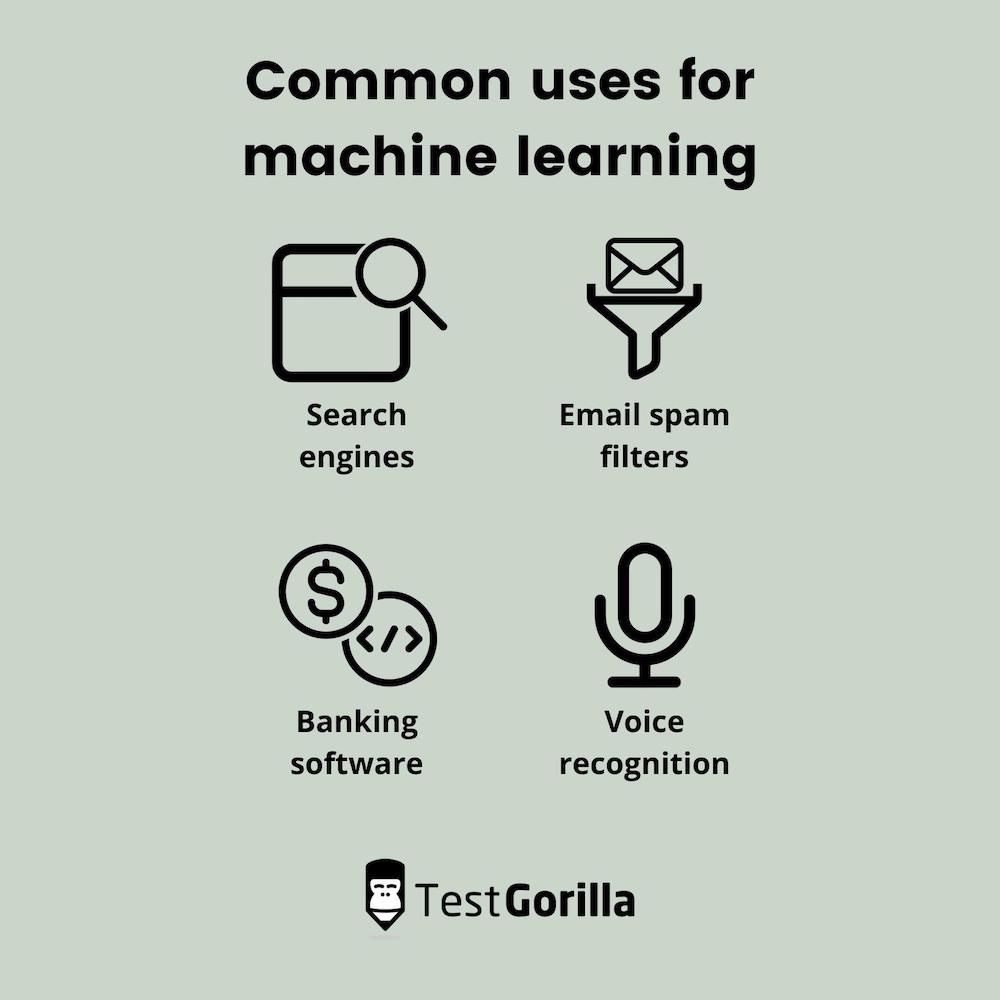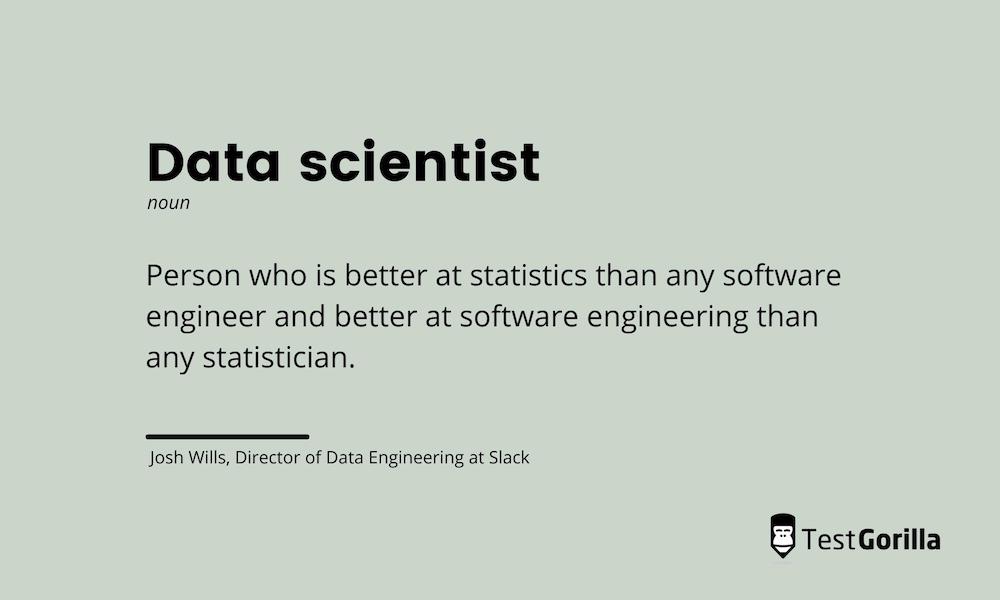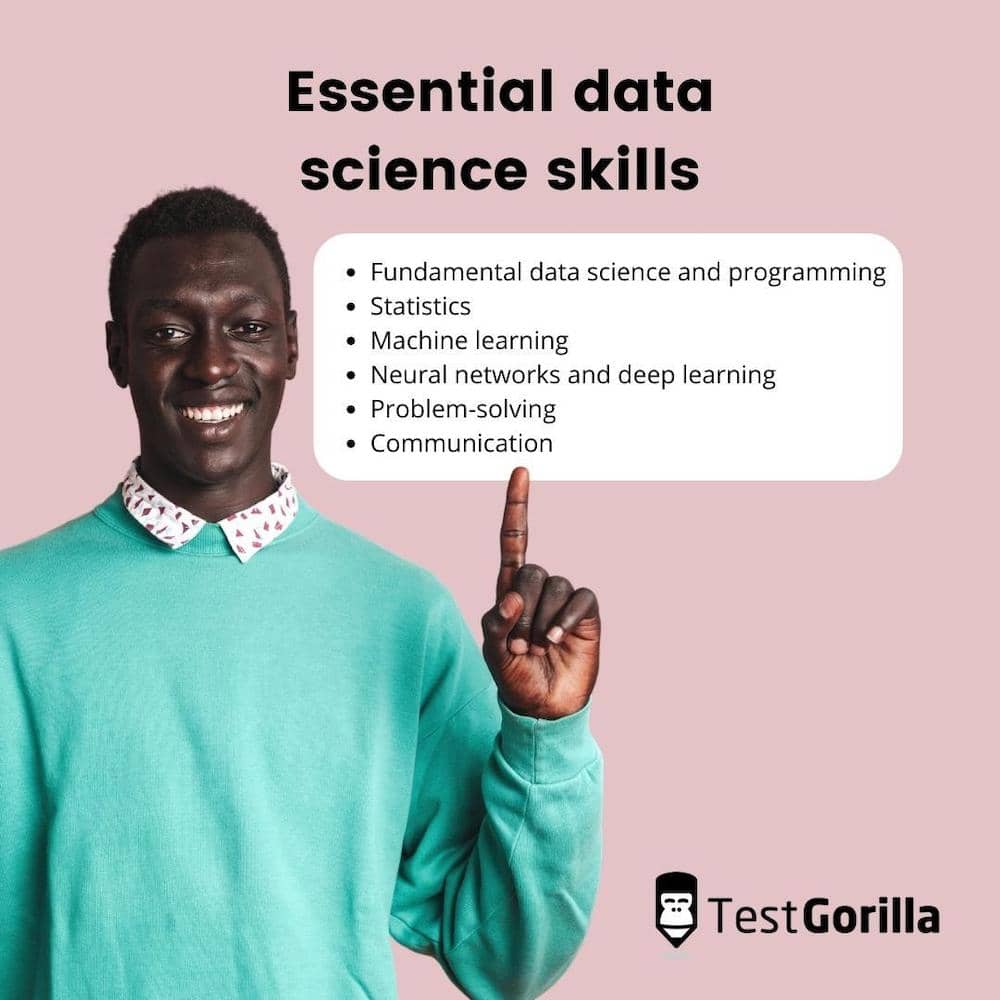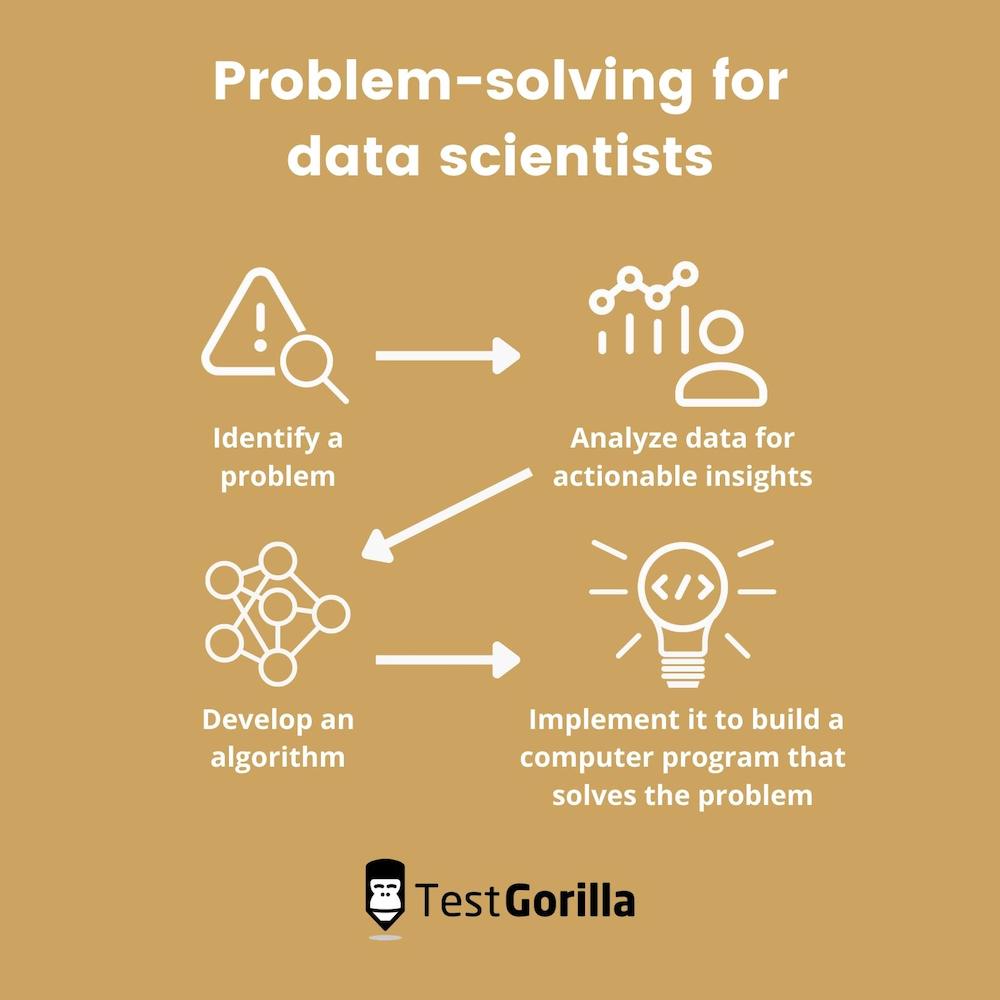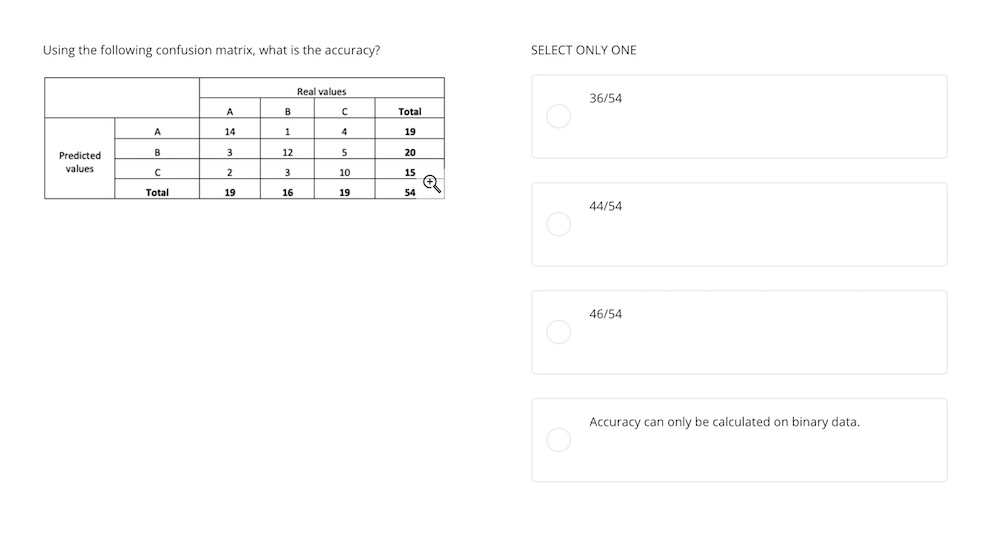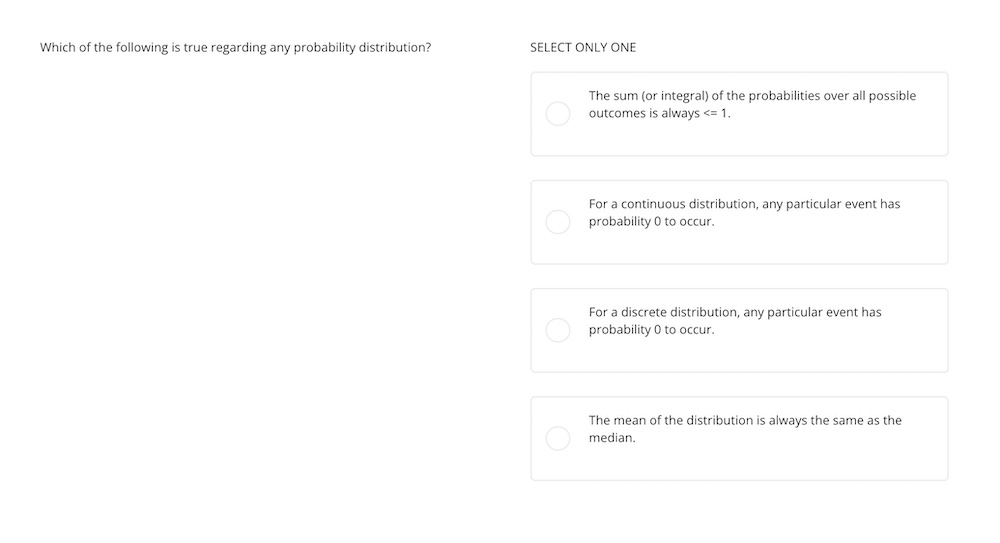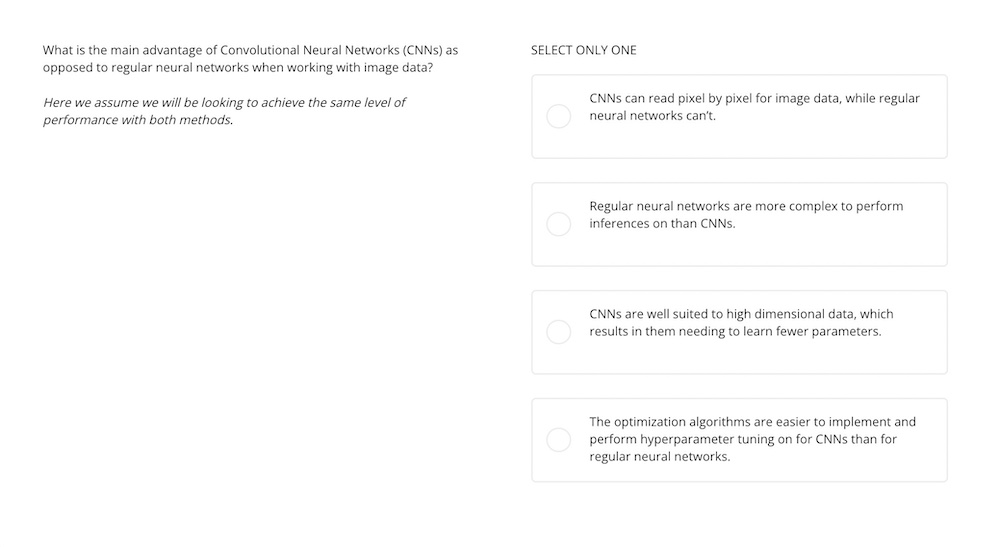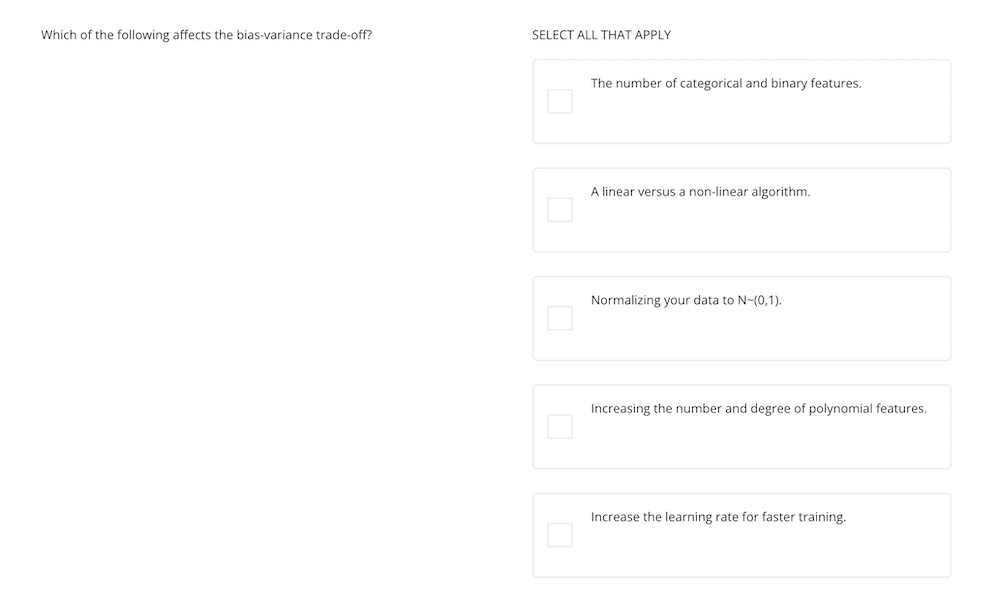How to recruit machine learning talent with data science assessments
Broadly speaking, machine learning refers to a machine’s capability to imitate intelligent human behavior. And it’s no longer just the stuff of sci-fi novels: Artificial intelligence and machine learning are behind more of our daily digital interactions than we might realize.
As data science and analytics start to dominate the business world, machine learning talent is in high demand. Read this blog post and we’ll tell you all you need to know about machine learning recruitment.
Table of contents
What is machine learning all about?
Machine learning (ML) is a type of artificial intelligence (AI).
Machine learning algorithms use historical data inputs to predict newer output values, hence the learning: The computer learns from past experiences, by identifying patterns, to improve its performance.
The term was coined in 1959, but machine learning didn’t take off until the 1990s. The new field emerged because ML began to work towards a different goal from AI. Rather than just building and achieving artificial intelligence, machine learning aims to solve practical, everyday problems with AI.
Common uses for machine learning include:
Internet search engines: AI helps search engines to register whether or not one website meets a searcher’s needs more than another. The top web pages, images, and videos that you see in search engine results pages are there because of machine learning algorithms.
Email spam filters: An ML-based spam filter can be trained to recognize spam emails using data from emails that have already been recognized as spam. The larger the input of pre-existing spam emails, the better the AI will be at spotting new ones.
Banking software: Banks are using ML to detect frauds. They train AI using by inputting data from pre-existing fraudulent behavior. Machine learning is also being used to improve customer experience since their behavior can be tracked to offer personalized services.
Voice recognition: The most advanced speech recognition services use AI and machine learning. Machines or programs can be trained to identify spoken words if they’ve processed enough human speech data.
ML and AI can lead to hiring bias
Recruitment is another increasingly popular use for ML and AI. Businesses and organizations are using machine learning tools to scan CVs and resumes and identify applicants who have the desired education, experience, values, and skills.
It’s a quick and easy way to sift through candidates, especially when you’ve got a large number of applications: An AI can process the information on an infinitely bigger scale than the human brain. But ML recruiting models are still at an experimental stage, and they’re at risk of perpetuating the biases that already exist in traditional hiring strategies.
Machines learn by spotting patterns in pre-existing data. So if an AI is being fed data that reveals biased hiring patterns, it will deduce that certain candidates are preferred over others, and the pattern will continue.
Companies and their recruitment teams need to be careful and ensure AI isn’t leading to biased employment processes.
To help use ML intelligently and effectively we need top machine learning talent – and to hire top talent we need an unbiased and reliable recruitment strategy.
Keep reading for more information on both.
Data science jobs are everywhere, but companies are struggling to find talent
AI and machine learning belong to the realm of data science. This is the field of study that uses data to examine the world and answer its questions. It combines domain knowledge and expertise with programming skills, mathematics, and statistics to extract insights and solutions from data.
Data is everywhere. Our interactions with businesses become increasingly digital, and so every aspect of our engagements as customers can be measured, analyzed, and used to make data-driven choices about improving the customer experience.
Because of this, data science talent is in high demand. The US News & World Report’s annual job ranking list shows that data scientists and statisticians are top careers, with data scientist ranking as the eighth-best job across all categories.
There are science-related jobs in almost every field, from governments to video game companies. But despite being such a covetable career, employers claim they’re facing a talent shortage. 35% of companies surveyed by QuantHub say data science and cybersecurity are the hardest roles to find skillsets for.
Why?
It isn’t that not enough people are training to become skilled data scientists. Talent shortages are rarely that straightforward. Here are a few reasons why data science skills might seem tough to find.
Jobs have a high barrier to entry.
Traditional hiring practices are outdated.
Companies face a critical skills gap.
The best thing companies can do to fight talent shortages is to adjust their hiring practices to make them reliable, unbiased, skills-based, and data-driven. Using data to hire entry to mid-level data science talent makes for satisfying and effective recruitment – a data scientist would be proud.
Pre-employment assessments are the best solution. You can use them to eliminate bias and identify candidates who are as skilled as they say on their CV, as well as those who might be underselling themselves.
The best insights on HR and recruitment, delivered to your inbox.
Biweekly updates. No spam. Unsubscribe any time.
Data science skills for top machine learning talent
Here are the key skills to look for in entry to mid-level machine learning candidates. You can test for them using a data science assessment.
Fundamental data science and programming skills
The fundamental data science skills are all mathematical. They include:
Linear algebra
Predictive modeling
Data wrangling
Model building and deployment
Data structures and visualization
Data science and machine learning candidates also need to have great programming skills. With code, data scientists can turn their theoretical and statistical knowledge into useful applications.
It’s generally accepted that data science candidates should be able to code proficiently in at least one programming language. Python competency is the most common, but lots of data scientists are also competent in other languages, such as R, SQL, and Java.
Statistics skills
Statistics probability-based methods are at the foundation of all data science.
They involve analyzing data to identify mathematical characteristics, like averages and variances. Decisions can then be made based on these characteristics. For example, if you find that the people using your products are 22 years of age on average, you can choose to direct marketing efforts to the channels that this age group interacts with most.
Statistics skills and knowledge are foundational when it comes to any technique for working with data. They’re at the core of most data science jobs, including machine learning roles, so you should ensure you hire a candidate with excellent statistic skills.
Machine learning skills
Machine learning skills are becoming indispensable for most data scientists, regardless of what kinds of projects they’re working on.
Candidates with great machine learning skills are familiar with supervised and unsupervised learning. The key difference between these two kinds of learning is the use of labeled training data. Supervised machine learning uses labeled input and output data, whereas algorithms do unsupervised learning with unlabelled or raw data.
Entry to mid-level machine learning engineers should also be able to write algorithms that can search, sort, and optimize. According to QuantHub, they should also be familiar with these key algorithms:
Basic, multi and logistic regression algorithms
Linear model
Support vector machine
K nearest neighbor
K means clustering
Decision trees
Neural networks
Neural networks and deep learning skills
The final item on the list, neural networks, are also known as artificial neural networks or simulated neural networks. Their structures and behaviors are inspired by and designed to mimic the human brain’s neuron-signaling processes.
Neural networks are at the core of deep learning algorithms, which are essentially neural networks with three or more layers. They attempt to simulate the human brain together, learning how to do so from large amounts of data.
While a single-layer neural network can make vague predictions, additional layers help refine and optimize these predictions, making them as accurate as possible. Deep learning is behind most of the AI applications and services that are driving innovation in the areas mentioned earlier on in the blog post: Search engines, spam filters, banking software, voice recognition, and recruitment.
Deep learning only differs from machine learning in the type of data it works with and the learning methods it uses. They’re closely intertwined: Deep learning is just a subset of machine learning. It’s the field where most machine learning advances are happening, so neural network and deep learning skills are important for data scientists.
For example, when hiring a computer vision engineer, the computer vision engineer job description must include neural networks as a required skill.
Problem-solving
Data scientists are problem solvers as well as mathematicians, statisticians, analysts, and software engineers. In fact, this skill is the one that underpins and unites all the others.
What data scientists and machine learning engineers essentially do is construct algorithms and programs that provide optimal solutions to problems big and small. It goes a bit like this:
Identify a problem
Analyze data for actionable insights
Develop an algorithm
Implement it to build a computer program that solves the problem
Defining the right problem and creating the best solution requires a great deal of cognitive ability as well as technical skills, so you should hire machine learning candidates who are excellent problem-solvers.
Communication
Data scientists need to communicate their findings, ideas, recommendations, and solutions to stakeholders and colleagues who have far less technical knowledge than they do. This is an important responsibility: Workplace communication is always important, but it becomes even more so when there’s a knowledge gap involved.
Machine learning candidates with great communication skills will be able to explain their work accessibly to the rest of an organization. It’s a crucial skill to look out for.
Data storytelling is emerging as a skill in its own right. It involves communicating the stories that data tells clearly and compellingly, the key components being data, narrative, and visualizations. All four types of communication are important to this process.
Rather than presenting your team with a spreadsheet of data and rattling off numbers, consider how you can engage multiple parts of their brains. Using data storytelling, you can evoke an emotional response on a neural level that can help your points be remembered and acted upon.
Test and hire for communication skills in machine learning candidates to ensure they can communicate, as well as analyze data.
Measure candidates’ skills with TestGorilla’s Data Science assessment
Of the skills mentioned above, the first four are considered hard skills, and the final two are soft or durable skills.
The former are role-specific and relatively quantifiable. They require quite a bit of maintenance: The field of data science is always changing, so data science skills must be kept up to date. Soft skills are a bit different. They are more personal attributes, and, although they can be quantified and worked on, they come more naturally to some than others.
With TestGorilla, you can measure all of these skills in your candidates. Our test library is full of technical, role-specific, soft, and cognitive ability tests.
First up is the Data Science test. You can use this to assess the technical data science skills listed above and identify top machine learning talent.
About the Data Science test
While it’s often said that the company with most data wins, it is in fact the company with the best-managed data that gleans the most valuable insights and comes out on top. And for that, you need a data scientist.
TestGorilla’s Data Science test is a great way to evaluate entry to mid-level candidates for any roles that require data-science knowledge and skills. If you’re recruiting machine learning talent, data, forecasting, or modeling analysts, this is the test for you.
All of TestGorilla’s assessments are created by subject matter experts. The Data Science test was built by an expert chosen for their knowledge and ability on the subject, and their reputation in the field. It has been peer-reviewed by other experts and calibrated using hundreds of test-takers with relevant data science experience.
Due to our feedback mechanisms and unique algorithms, the test is always being constantly improved.
So, how does it work?
The test will ask candidates questions about role-specific skills and knowledge. They’ll also have to use situational judgment to answer questions that regularly come up in data science settings.
Here are some examples of the kind of questions you can expect from the test.
This question assesses mathematical skills by asking candidates to interpret a confusion matrix.
Here, candidates are tested on their probability distribution knowledge.
Applicants who answer this question correctly have neural network knowledge.
Statistics knowledge is needed to answer this question.
Candidates who do well in our Data Science test will have a strong grasp of the data science fundamentals. They’ll also have suitable programming, statistics, neural networks, and machine and deep learning skills.
Assess soft skills in machine learning talent with our Problem-Solving and Communication tests
It’s just as important to hire candidates who have the soft skills required for data science roles. Once again, we’ve got you covered.
The Problem-Solving test can help you evaluate your candidates’ ability to evaluate complex situations, define problems, analyze data, and reach sound conclusions in order to deliver solutions.
Our Communication test is a great way to identify data science candidates who can communicate their complex ideas and solutions in an effective and professional manner
Recruit the best machine learning candidates with TestGorilla
By now, you should have all the information you need about hiring entry to mid-level machine learning talent with pre-employment tests. If you’re hiring for data science roles and you’re worried about finding skilled candidates, then look no further than TestGorilla.
After you attract candidates with your machine learning job description, you can reduce time to hire, cut recruitment costs, combat hiring bias, and boost employee retention with skills assessments. And all with the added bonus of identifying top applicants.
Whether or not you believe in the data science talent shortage, skills-based hiring is on the rise. And you can embrace the future of hiring with TestGorilla.
Book a demo with our sales team for more information, or sign up for a free plan to check it out for yourself.
You've scrolled this far
Why not try TestGorilla for free, and see what happens when you put skills first.


